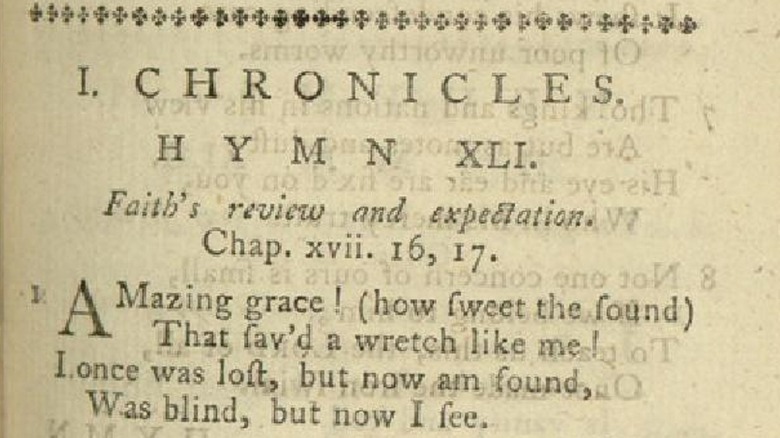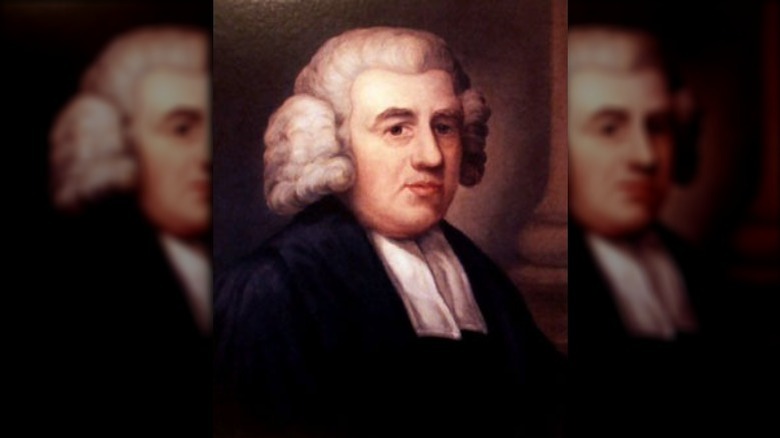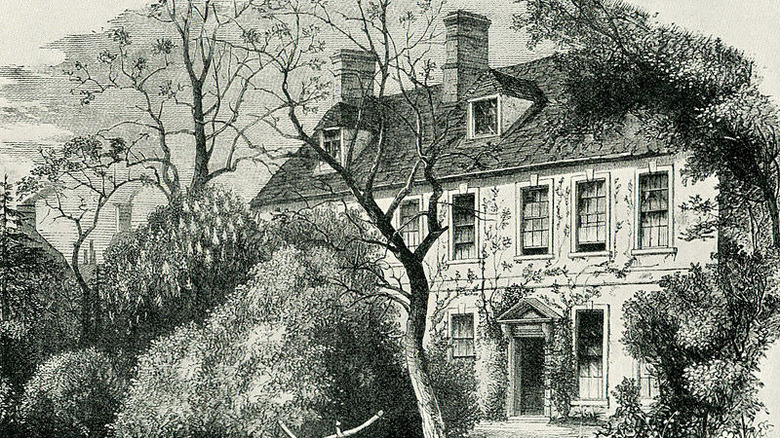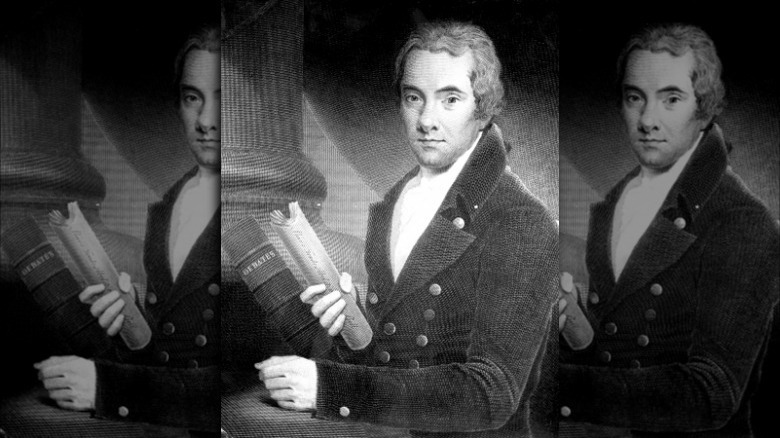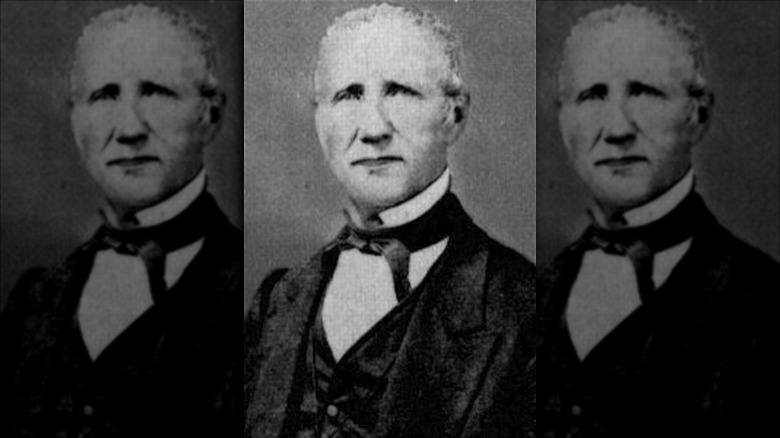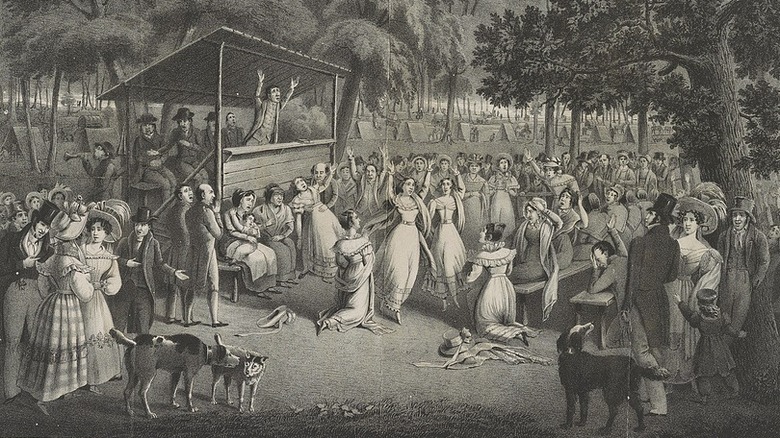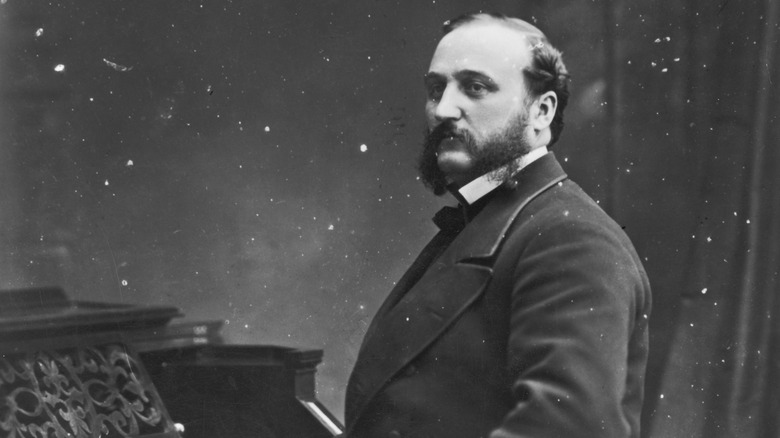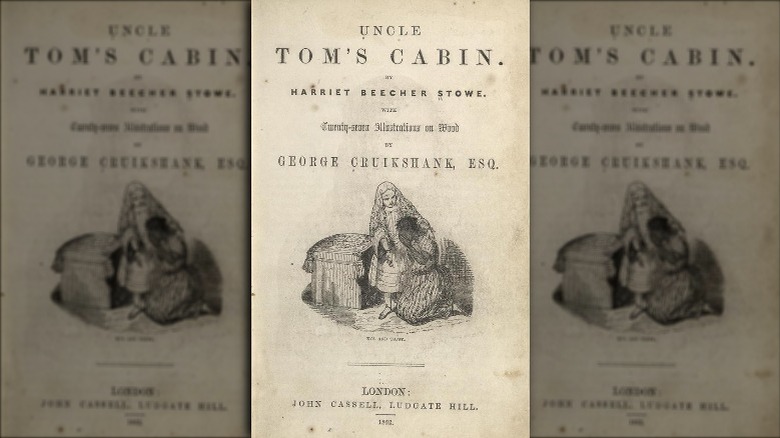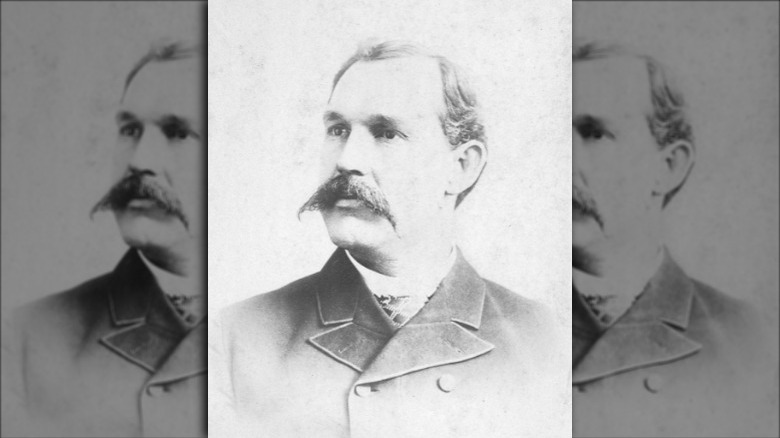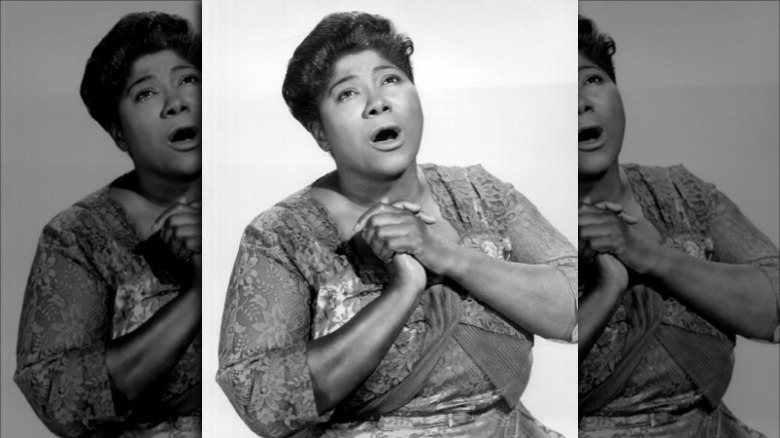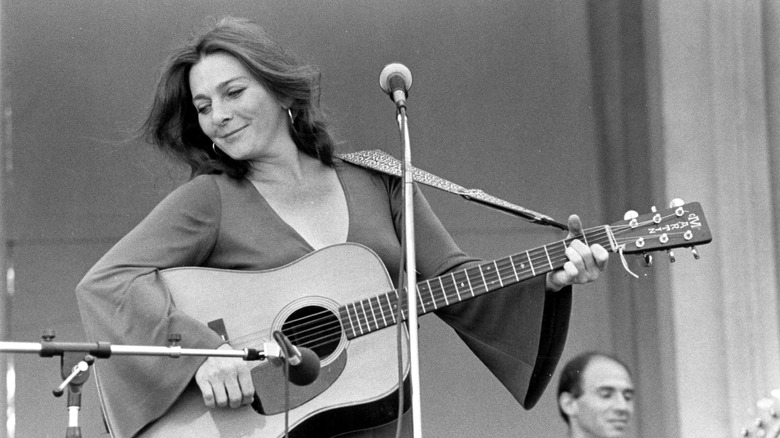The History Of Amazing Grace Explained
Music is subjective, and everyone has different tastes. But there are a few exceptional compositions that are universal, a short list of songs that everyone finds inspiring and comforting that link us to each other—and our ancestors.
"Amazing Grace" is one such song. No matter who you are or where you're from, you recognize the song instantly, and its energy is undeniably positive. For more than 200 years people have relied on the song to give them strength during hard times, to inspire resistance to cruelty and tyranny, or simply to be transported however briefly to a more spiritual and peaceful state of mind. The song's musical simplicity allows the sincerity of its message to shine through while making it a song that literally anyone can perform or interpret. From slaves in the antebellum South to other historically oppressed people to sitting presidents and recording stars, "Amazing Grace" is a song that is always guaranteed to stop people in their tracks and inspire them.
Despite the song's popularity and omnipresence in our lives, few people know the full details of how it came to be such a force in society. Here's the history of "Amazing Grace" explained.
Amazing Grace was written by a former slave trader
"Amazing Grace" is a song about the joy of discovering God's love and realizing you have been saved. It's served as a rallying cry for people in desperate need of spiritual support for centuries due to the pure joy its lyrics convey. And yet few people know that the man who wrote those lyrics spent much of his early life an unrepentant sinner—and a slave trader.
Biography explains that the song was written by John Newton. Born in 1725, Newton lost his mother when he was very young, and was raised by his sea-captain father, who frequently took Newton on voyages with him. Newton grew into a reckless young man who drank too much and got into a lot of trouble. Christianity Today reports that Newton lost jobs due to his "unsettled behavior," and was eventually pressed into the British Navy—but deserted. Later, he managed to get himself transferred to a slaver ship transporting human beings to bondage.
Newton experienced a near-death experience during one of his voyages and converted to Christianity as a result. For years this renewed faith was mostly talk as Newton continued to live a sordid life, but slowly he came to regret his ways, especially his involvement with slavery. Retiring from the sea, he became an ordained minister in 1764.
The lyrics were originally written for a sermon
John Newton, former slaver and hard-drinking rebel, became a dedicated Anglican priest serving a small church in Olney, Buckinghamshire (pictured, the vicarage). Christianity Today reports that Newton began an evening prayer service in 1769, composing a stirring sermon for each meeting, and later began writing short hymns to accompany his sermon. In 1773, one of the hymns Newton composed was what would eventually become known as "Amazing Grace."
As explained by the Oregon Catholic Press, the words Newton wrote out for the hymn are clearly inspired by his own experiences. Wild and selfish as a youth, Newton had many near-death experiences—he was once abandoned in Africa by his crew, and later barely survived a violent storm at sea, an experience that prompted his return to God and spirituality. He also worked for years on a slave-trading ship, an experience he later came to regret as he became a passionate abolitionist. Looking back on this life, Newton wrote about the incredible experience of being saved, of finding God's grace despite your flaws and sins. The lyrics also explicitly note the many times in Newton's life when he came close to death but was somehow miraculously saved.
According to The World, the hymn wasn't initially popular or regarded as anything special—but then, as noted by Biography, the original hymn had no music and would have been sung to any tune with the right rhythm and structure.
Its author didn't immediately oppose slavery
The man who wrote the words of "Amazing Grace" in 1773 was a former slave-trader who'd spent a wild, boozy youth getting into trouble and having near-death experiences before converting to Christianity and eventually getting ordained. His most famous composition directly references his experiences and acknowledges his guilt over his involvement in the slave trade. But it would be another 15 years before John Newton spoke out publicly against slavery—in part because, amazingly, many Christians at the time believed the Bible justified slavery.
As the Library of Congress explains, Newton came to spend time with a young member of Parliament, William Wilberforce, the son of one of Newton's friends. Wilberforce experienced his own religious awakening and conversion, and the two men began a lengthy dialog concerning their duty as Christians. Newton encouraged Wilberforce to use his power and privilege to make the world a better place—especially concerning the slave trade. Newton prevailed on Wilberforce to introduce legislation abolishing the slave trade in Britain.
Newton himself finally spoke publicly about slavery in 1788, publishing "Thoughts upon the African Slave Trade." The publication made his position on the issue extremely public at a time when there was still significant opposition to ending slavery—in fact, it would be nearly two more decades before slavery was outlawed in Britain in 1807.
Amazing Grace didn't have any music until 1835
As noted by Biography, the hymn that would become known as "Amazing Grace" was originally written in 1773. But, according to The Library of Congress, the hymn was only published in "Olney Hymns" in 1779. This book of hymns became very popular and was widely disseminated.
PBS explains that the hymn first appeared in the United State in 1789, but there was no official music associated with the lyrics. The World explains that hymns like this would have been sung to a variety of different tunes at first—any popular tune that fit the words would do. It wasn't until 1835 that the lyrics to "Amazing Grace" were matched to the tune we recognize today—a piece of music by an unknown composer called "Harmony Grove" that first appeared in 1829. William Walker (pictured), known as a singing preacher, compiled a songbook called "The Southern Harmony" in 1835, and merged John Newton's words with a slightly revised version of "Harmony Grove" and called it "New Britain."
"The Southern Harmony" was an enormously successful songbook and found its way into hundreds of churches around the country—bringing with it an iconic hymn that would soon become one of the most beloved songs in history.
The Second Great Awakening made Amazing Grace a hit
"Amazing Grace" was originally written in 1773, and the definitive, iconic music was finally added in 1835 when William Walker paired them with existing music and called it "New Britain." But it took a phenomenon known as the Second Great Awakening to transform the song into a universally loved piece of music.
According to Britannica, the Second Great Awakening was a religious revival movement that began in the late 18th century and ended around 1835. The movement was marked by a shift in attitude among churches in the U.S. towards gaining new members. Camp meetings were a common feature, and according to Connolly Cove singing songs with simple, powerful messages was a big part of that. In fact, a simplified system for teaching music called Shape-Note Singing was developed so people without musical training could learn new songs.
The World notes that some of these camp meetings during the Second Great Awakening involved thousands of people of all races and backgrounds—and they would often find themselves in the shared experience of singing "Amazing Grace" (still called "New Britain" at the time). This helped spread awareness of the song and associate it with a powerful spiritual experience that people then took home with them.
The Cherokee sang Amazing Grace on the Trail of Tears
As the song that would eventually be known as "Amazing Grace" grew in popularity, it was often adopted by the oppressed as an anthem of hope. As noted by the Murfreesboro Post, the song became associated with African American slaves trapped in miserable bondage throughout the Southern United States. But there was another group of horrifically abused people in the United States that adopted the song as a symbol of their suffering—and their hope: The Cherokee Nation.
As explained by History, Indigenous Americans were violently uprooted from their land and forced to move west as white settlers travelled away from the coast seeking farmland. President Andrew Jackson signed the Indian Removal Act in 1830, and thousands of indigenous Americans were thrown off of their ancestral lands and forced to walk what they described as a "trail of tears and death."
The Trail of Tears, as it became known, is one of the country's most shameful episodes. As noted by the University of Pittsburgh, many of the Cherokee uprooted by these racist policies sang "Amazing Grace" as they made this horrific journey. According to historian Richard M. Swiderski, the hymn had been translated into Cherokee by the Reverend Samuel Worcester—and the song became something of an unofficial National Anthem for the Cherokee.
It wasn't called 'Amazing Grace' until 1877
When John Newton wrote the words that would become "Amazing Grace" in 1773, he didn't give it an official title. As noted by Hymnary, when the hymn was collected in the book "Olney Hymns" in 1779, the song was titled "1 Chronicles 17:16-17, Faith's review and expectation." Which is not exactly catchy.
As noted by The Library of Congress, the music that would eventually be paired with Newton's lyrics was originally called "Harmony Grove," which was paired with the words to a completely different hymn, "There Is a Land of Pure Delight" in 1829. When the words to "Amazing Grace" were finally set to the music we all recognize today in 1835, the song was given the title "New Britain."
It wasn't until 1877 that the song was officially listed under the title "Amazing Grace." Ira D. Sankey (pictured) compiled a book of hymns called "Sacred Songs and Solos" that included the song under that title—but paired it with different music. Still the song continued to appear under the title "New Britain" for many years before settling on "Amazing Grace"—a recording by the Original Sacred Heart Choir in 1922 used "New Britain," for example.
A famous novel helped shape our perception of the song
By the mid-19th century, "Amazing Grace" was an established hymn and a popular song at religious revivals and meetings, but it had not yet become the culturally dominant song we know today. One step in that process was its inclusion in Harriet Beecher Stowe's classic abolitionist novel, "Uncle Tom's Cabin" in 1852.
According to The World, Stowe may have encountered the song through her parents and brother, who were revival preachers and may have brought a young Harriet with them to camp meetings. As noted by music historian Deane L. Root, Stowe included references to many hymns and other forms of music in her novel in order to illuminate her characters. At the time of the book's publication, however, "Amazing Grace" may have been sung differently and to different music than the settled modern version we're all familiar with.
As noted by historian Jonathan Aitken, Stowe includes the hymn at a crucial moment in the story when Tom is suffering a "soul crisis." Tom has a vision in which Christ tells him he will someday rise above his suffering, and Tom is so moved by the experience that he begins to sing this famous hymn. The novel helped link the song with spirituality and endurance in the public imagination, and helped establish it as one of the most well-known hymns in America.
New lyrics were added
The version of "Amazing Grace" we typically sing or hear performed today is a little different from the original. First of all, the original had no specific music associated with it—the tune we think of as "Amazing Grace" today was first added in 1835. Secondly, new lyrics were added to the song thanks to a very famous novel.
In Harriet Beecher Stowe's classic novel "Uncle Tom's Cabin," Tom sings the hymn after a pivotal moment of despair—but Stowe changed the song by adding new lyrics, including one stanza that begins "When we've been there ten thousand years ..." Stowe's family included several revival preachers, so she was very familiar with the hymns commonly sung at camp meetings and similar events—and was also familiar with the African American community's traditions when it came to these songs.
According to historian Jonathan Aitken, these new lyrics were part of an oral tradition in the African American community for decades. The new stanza eventually replaced the original ending of the song entirely. It was codified as the final stanza of the song in 1910, when renowned worship leader Edwin Othello Excell published that version of the song in "Coronation Hymns."
Amazing Grace became associated with the Civil Rights movement
"Amazing Grace" entered a whole new level of popularity and fame with the advent of recording technology and radio in the 20th century. As noted by The Financial Times, the song was first recorded by the Original Sacred Harp Choir in 1922. But as noted by historian Jonathan Aitken, it was a 1947 recording by Mahalia Jackson that first injected the song into the wider pop culture—and eventually made it into the iconic song of the Civil Rights movement.
Not only was Jackson's recording a big hit and a big seller, but Jackson was a friend and supporter of Martin Luther King Jr. and frequently sang the song at marches and rallies throughout the 1960s. Jackson regarded the song as a talisman against violence and chaos, and her performances helped connect the song's powerful spiritual message with the fight against racism and for freedom. As noted by Literary Hub, the song's focus on humility made it a powerful tool for disarming opponents and simmering-down violence at large gatherings.
Other activists soon took up the practice—The World notes that Fannie Lou Hamer frequently led protesters in singing "Amazing Grace," lending the movement a spiritual sheen. Today the song is closely connected to those struggles.
The song has become a pop hit
Most hymns and spirituals stay in church or the revival tent, but "Amazing Grace" has transcended its spiritual origins to become a piece of pop culture. You don't need to be religious in any way to be familiar with the song—and the song has even been a huge hit in terms of radio play and record sales several times over the years.
The song has been recorded several times, and as historian Jonathan Aitken notes was a big hit for the first time in 1947 when Mahalia Jackson recorded a version that resonated with the Black community. But the song broke through to a general audience when Judy Collins released a version in 1970 that as iNews reports spent 67 weeks on the UK chart, including nine in the Top Ten. The song also hit #5 on the Billboard charts in 1971, and continued to chart for the next year.
In 1972, singer Aretha Franklin recorded an incredible version of the song at the New Temple Missionary Baptist Church in Los Angeles. Her version was released on the album "Amazing Grace." According to Vanity Fair, the album sold over 2 million copies—becoming the best-selling album of Franklin's career as well as the best-selling live gospel album of all time.
Amazing Grace became the Official Hymn of Tennessee in 2021
There is little doubt that "Amazing Grace" is one of the most famous and recognizable songs in the world. Although it was written by an Englishman in the 18th century, it has increasingly been associated with the United States. So while unexpected, it's not too hard to understand why Tennessee would move to make the song it's Official Hymn.
As reported by CNN, a bill to do just that was introduced into the Tennessee state senate in March 2021. Sponsors Mike Sparks and Raumesh Akbari argued that although the song has no direct connection to the state, many singers with strong connections to Tennessee, including Elvis Presley, Aretha Franklin, and Garth Brooks have recorded and performed the song. The bill was approved out of committee with just one vote against.
The Tennessee Star reports that "Amazing Grace" officially became the Tennessee Official Hymn in April 2021. One stumbling block was the original bill's insistence that a specific version of the song recorded by Dolly Parton be used—but this was dropped in favor of allowing any version of the song to serve. According to The Tennessee Ledger, Governor Bill Lee signed the bill into law in June of 2021.
